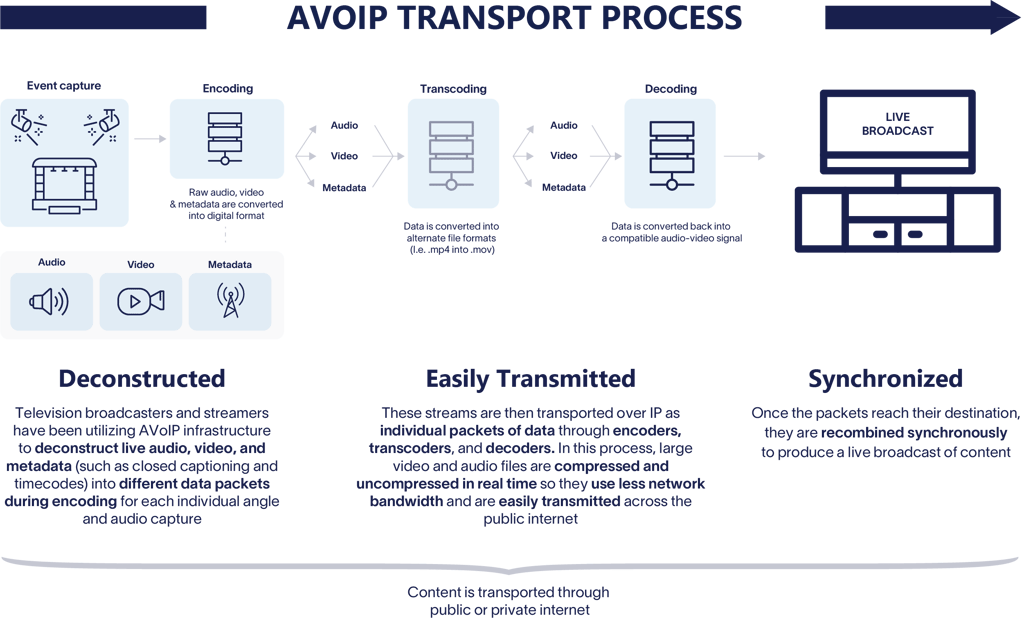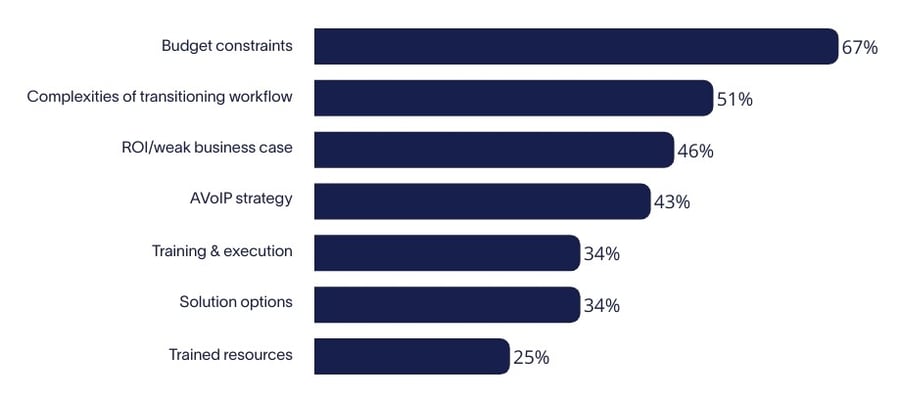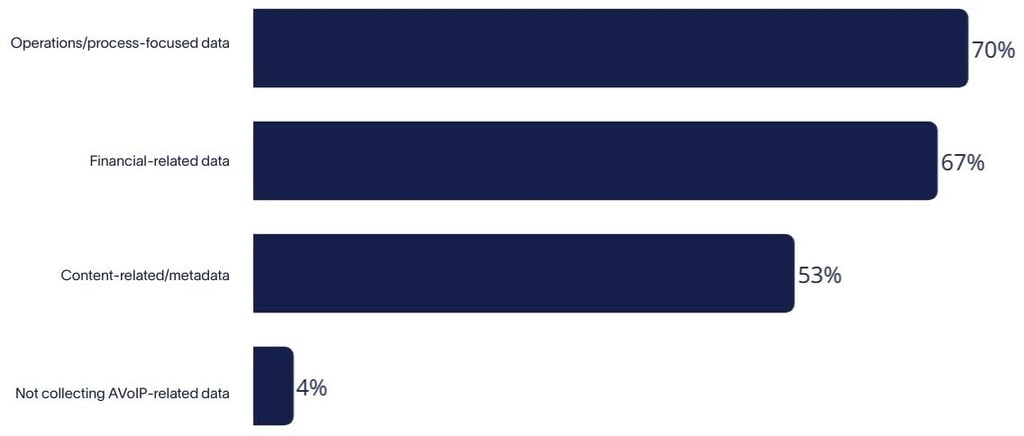INSIGHTS
Live From Anywhere… It’s Audio and Video Over Internet Protocol
Altman Solon, the largest global strategy consulting firm exclusively working in the Telecommunications, Media, and Technology (TMT) sectors, has released its Global Audio and Video over Internet Protocol report. The survey of over 100 broadcast industry leaders offers insight into the use of AVoIP technology in live broadcasting, the primary drivers and challenges to adoption, and how broadcasters can invest in AVoIP capabilities to meet growing consumer demands.
From yearly spectacles like the Super Bowl to generational, worldwide concerts like Live Aid and thousands of smaller events connecting communities, live televised events have produced some of the most memorable moments in history. Their ability to draw big TV ratings and create lucrative advertising partnerships has propelled television networks for decades. Historically broadcast through satellite feeds, these live events require significant investment in equipment and on-site personnel from broadcasters, making some live events economically and logistically unfeasible. As a result, broadcasters are increasingly turning to Audio and Video over Internet Protocol (AVoIP) technology, offering increased flexibility as well as time and cost savings.
AVoIP is Transforming Live Broadcasting
AVoIP delivers audio, video, and metadata via an internet connection. While AVoIP can replace legacy broadcast protocols delivered over satellite, it is often used in conjunction with these tools. Altman Solon surveyed over 100 broadcast industry executives who use AVoIP to assess trends and opportunities for this technology that reduces barriers to entry for live broadcasting events by lowering costs and providing more flexibility.

From TV and broadcast companies to over-the-top services, infrastructure system integrators to cable, satellite, and telecom providers, more broadcasters are turning to AVoIP technology to meet heightened consumer demands and increase output. Customer requirements ranked as the biggest driver of AVoIP adoption over the past 18 months at 70%, followed by outdated technology (56%) and high operating costs (48%).
Broadcasters Face Headwinds When Adopting AVoIP
Most broadcasters surveyed estimated that less than 50% of their live broadcasting infrastructure has transitioned from legacy tools to AVoIP. While conversion to AVoIP is expected to increase over the coming 12-18 months, broadcasters of all sizes face headwinds as they transition from satellite broadcasting. Respondents are limited by budget constraints (67%), complexities of workflow transitioning (51%), and anticipated return on investment (46%). The impact of these challenges varies in strength based on the size of the broadcaster. Larger broadcasters, while having the means to invest in an AVoIP tech stack, are hindered by red tape and are often unable to make swift, agile decisions. On the other hand, small-to-medium-sized broadcasters run on tighter capital budgets, but their smaller size enables decisions around adoption.
Limitations to Using, Integrating, or Increasing AVoIP Production Capabilities

Talent Gaps Present Significant Barrier to AVoIP Adoption
Challenges with hiring, training, and retaining talent, particularly candidates from diverse backgrounds, persist. Despite the growing demand for engineers and technicians with skills to operate this new infrastructure, the supply of engineers entering the AVoIP field is not keeping up. This scarcity of highly skilled engineers has forced some broadcasters to retrain their employees to stay up to date with current AVoIP requirements and expand their search for new talent.
Specific challenges exist within recruitment and retention of talent from a broad array of backgrounds, though survey findings indicate improvements across the industry in increasing diversity within its ranks. 91% of respondents noted positive strides in both the recruiting efforts and changes in representation in the production industry. Retention of these candidates is heavily influenced by leadership, both in its actions and in the diversity of those within its ranks. Prioritizing equal opportunities for candidates who may require more support during the hiring process and promoting diverse candidates into leadership positions will advance the change happening within the industry.
Defining AVoIP Success with Data
AVoIP can send content out to its destination while receiving a performance data stream. Broadcasters can collect valuable performance data that can improve stream quality and workflow efficiency. This process data is the most collected data among AVoIP users (70%), followed closely by financial data (67%) and content-related data (53%). This data can be leveraged by broadcasters to identify and reduce broadcast costs, improve resource usage, track broadcasting trends, and drive process improvement across the broadcast ecosystem.
Production Data Collected to Help Make Decisions Around AVoIP Process

Unfortunately, broadcasters face limitations in data collection. Factors including insufficient business intelligence strategies, gaps in training, and lack of specific tools for data analysis hamper efforts to leverage the rich data provided by AVoIP. Broadcasters have an opportunity to build out their data collection strategies alongside their data analysis tools, rather than consecutively, to maximize efficiency.
The Future of AVoIP Broadcasting
The broadcasting industry is changing rapidly. With global consumers’ appetite for live broadcasts on the rise, broadcasters should invest in AVoIP technology to keep up with this demand and benefit from lower costs. When implementing internet protocol into live broadcasting, organizations should look at this transition as a long-term investment. Some key steps prior to adoption include:
- Reevaluating investment cycles and the practice of amortizing costs past the valuable life cycle of legacy technology
- Developing a strategic capability roadmap that includes budgets, business requirements, and financial performance parameters
- Funding training programs for technicians and engineers, especially those from diverse backgrounds, to increase the volume of candidates coming through the pipeline
- Changing incentive structures to prioritize long-term over short-term profits, creating an environment where decision-makers are more open to immediate losses in favor of long-term, increased profitability
Altman Solon released a related report on Virtual Production adoption trends in the film industry in late 2022, which you can read here.